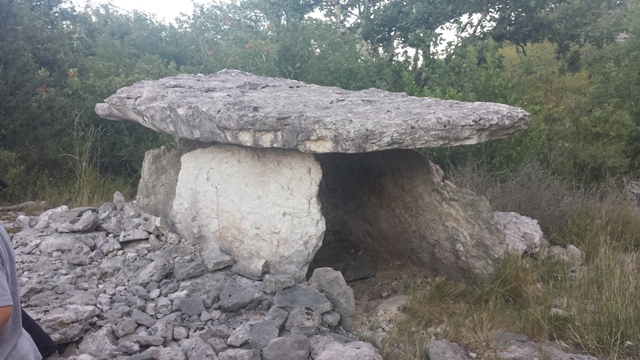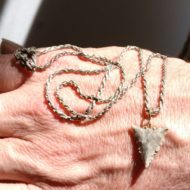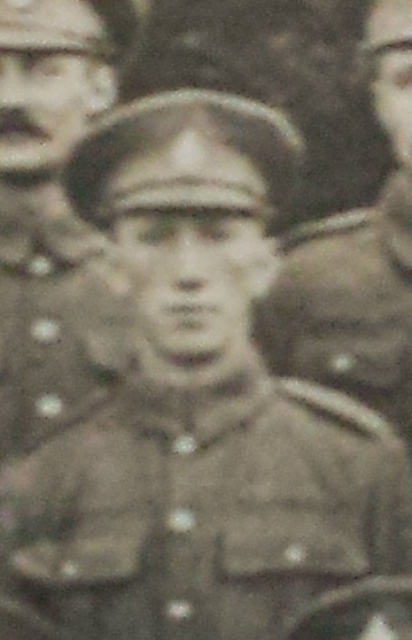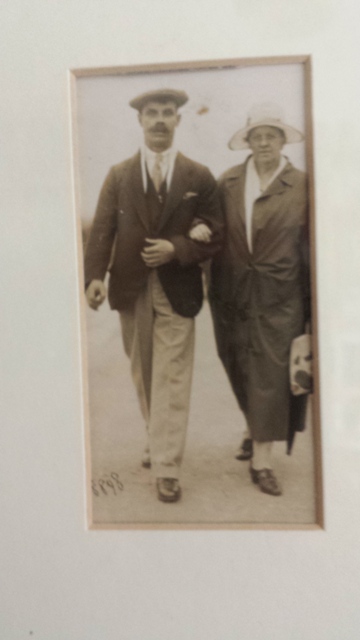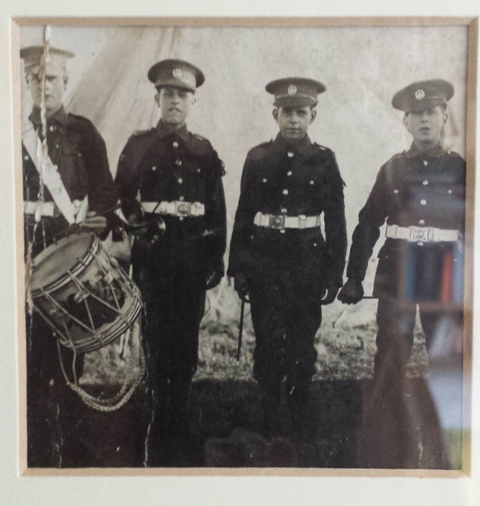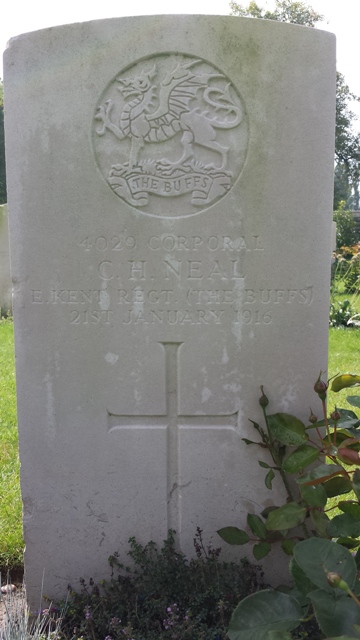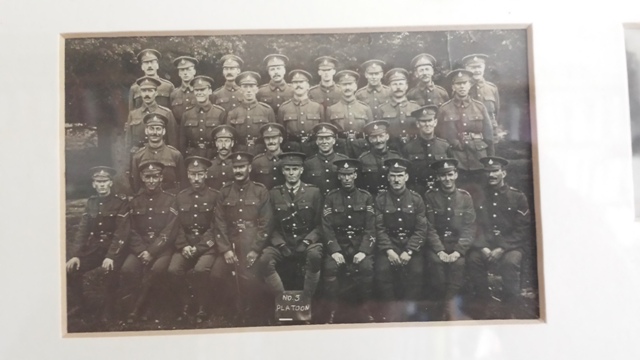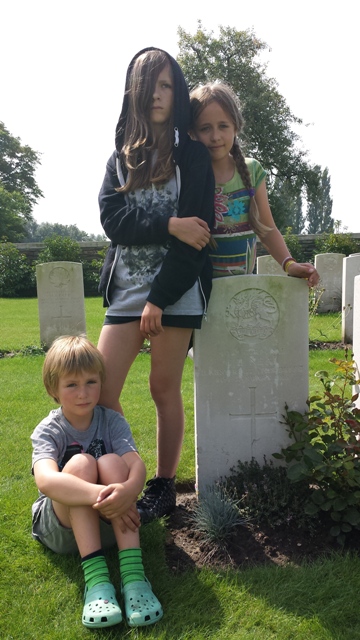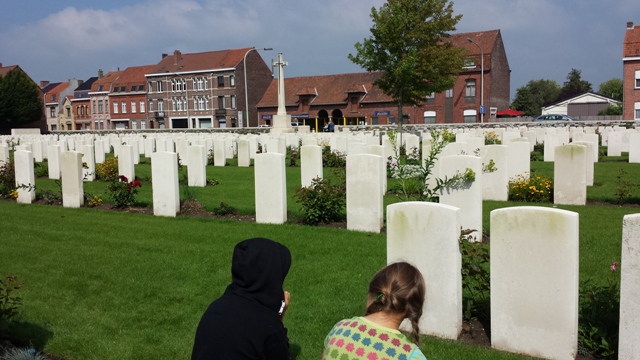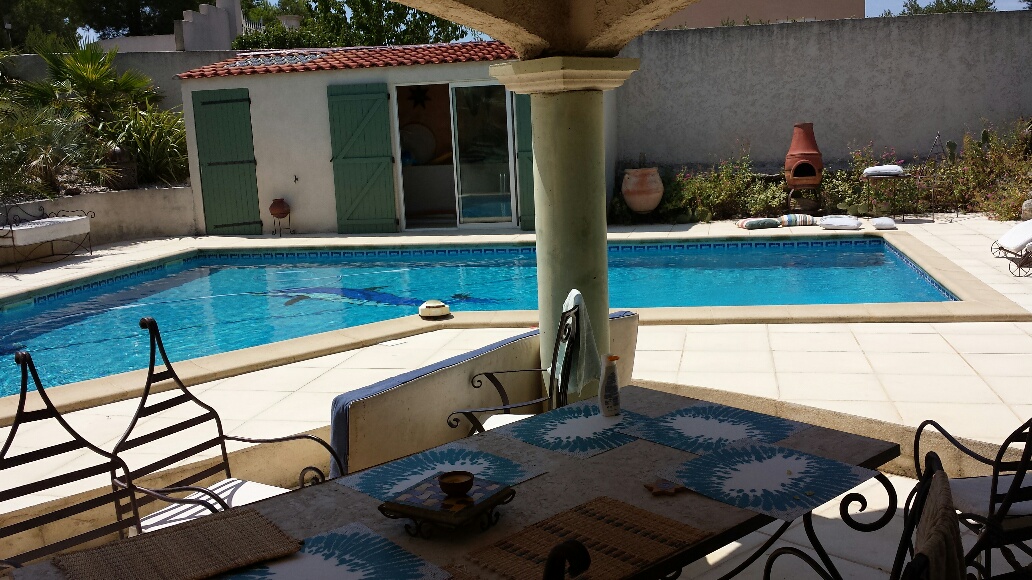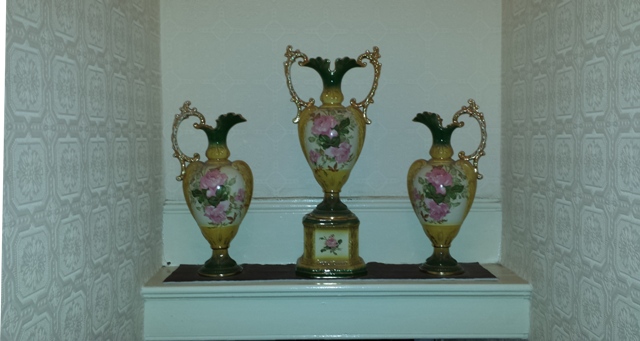We went on a walk. A mythical walk. One of those wonderful meaningful and completely fortuitous series of events which are the very nature of embodied ritual, religious life and yet have no meaning at all. It’s just the story.
Gaetan, Claude Califano’s father, who had been a keen walker on his retirement, had given me some photocopies of walking instructions and maps for a few local excursions we might do with the children in the Ardeche. I chose one of them largely because it was close by and because it ended or rather the midpoint of the walk, was at the location of some very ancient dolmens, 6000 years old, registered historical monuments.
Our route involved are driving up a particular road, parking at a particular bend, following under a bridge a small stream down to a larger stream, bearing right along the stream bed past some pools to a spring and then finding the dolmens on the hillside to the left. Everything seemed fairly straightforward and we drove up the road until we reached the particular curve in the road and we parked the car. We followed the instructions to the letter and I did my best to follow it on the map although I was quite uncomfortable with the relation between the walk and the map. Saskia was very uncomfortable with it as well and neither of us could understand why we were having to fight our way is too thick undergrowth getting scratched and seemingly unable to find a path on a walk which had been recommended to us by a man who knew the area so well. It was a real struggle to get through this undergrowth with great thorns literally tearing at our clothes. There was something ominous and dark about the bushes around us and we found ourselves confronted with some extraordinary sights of wildly exotic spiders and crickets the size of locusts. We made our way down the first stream, more or less, we joined the second stream and made our way down to a rather muddy and boggy area which clearly had a spring underneath it. We turned left and found no Dolmen but found ourself faced with some sort of chainmail fencing encasing presumably an area of private hunting. Things were wrong. The children were hot and tired and everyone was irritable and argumentative. Lottie was beside herself with anxiety from the presence of so many spiders. It was clear that this was not right. I persuaded everybody that things would be fine and returned to the car driving down to meet them and pick them up on the roadside.
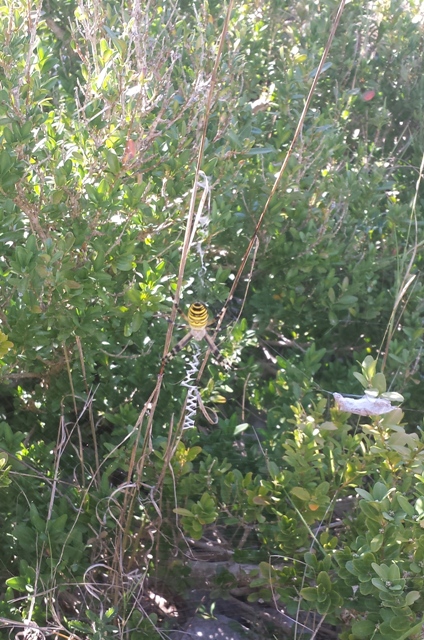
We continued in the car further up the road and it was obvious that we had taken the wrong bridge and the wrong stream. We followed more carefully this time and found ourselves to larger bend in the road with a small car park where we expected it to be. We parked and we walked around under the bridge a little easier this time although still the past did not seem completely clear and then it becomes slightly narrower and increasingly our anxiety tells us that is this perhaps wrong once again? The path weaved down through increasingly steep dry riverbed’s with rocks which we turn around. And then our smaller stream joins a larger high walled riverbed. So high walled that there are cliffs practically on one side. We follow the river bed down and had a vision of some sort of turquoise light which as we approach it becomes limpid pool of water.
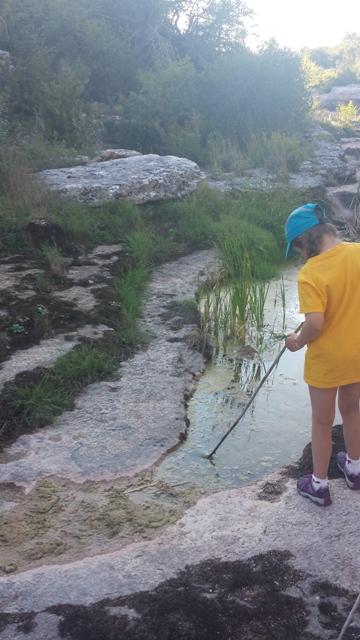
Everybody is excited and thrilled. We hear bee eaters coasting through the sky above us. Short toed eagles glide through the sky above. There are many of these turquoise pools as we make our way down the dry riverbed. With reeds on the sides they are teeming with life. Frogs jump into them as we approach, strange bizarre larvae wriggle along the sands at the bottom of the water. Everyone is completely engrossed in the beauty of nature and the children are realising that they are actually walking through the closest thing any of them have ever seen to completely magical fairyland.
They begin to gather things into some sort of collection with a fantasy of making a film about a fairyland. Little acorns perhaps. Small stones that look like kettles. Past more pools walking over rocks watching out for frogs disturbing tadpoles dragonflies landing here and there. And through these astonishing pools we find ourselves coming down to hear a gushing spring and there in the crook of the dry riverbed water is pouring out of a crevice in the rock and we realise we’ve reached the bend where we should turn to the left. We climb a ledge and their straight in front of us not 30 yards from the Springs sits a dolmen that looks as if it was only built yesterday. Made of three large stones to set on their side and the third making the top. They were formed from the local limestone and were bright white. It was really hard to imagine that they were actually that all.
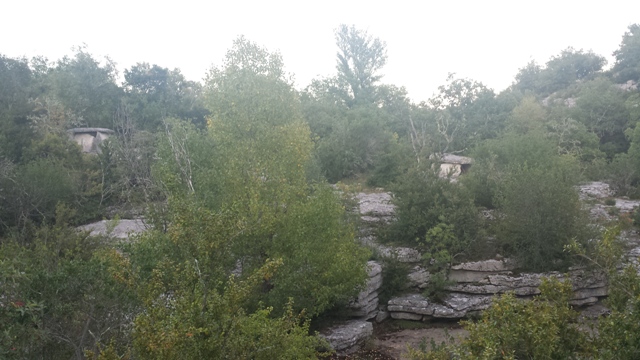
The first one stands not 30 yards from the dry riverbed we walked up to it and then behind it we walked up to the second another 30 or 40 yards behind it equally beautiful and perfect condition. We didn’t go any further but beyond this the spur of land climbed about 300 feet and carried the remains of another four or five Dolmens which had largely collapsed. From an archaeological perspective I don’t think I’ve ever seen such a clear set of ritual monuments in my life so clearly related to the position of the spring.
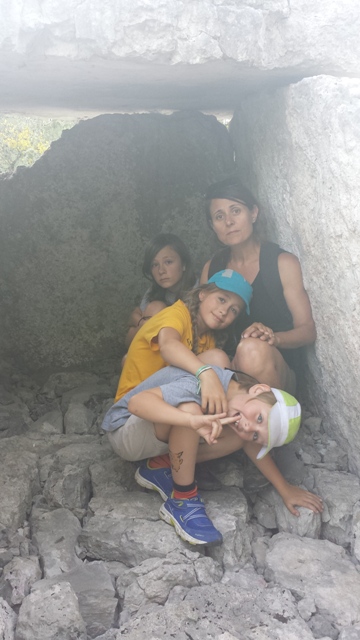
So they were quite clearly our ritual monuments as well and our movement down through the Wonderland of the pools to find them. It’s just so happens that I had decided to give the children are present that day. I wanted to wait until we got to the Dolmen to give it to them which I did. Ella made a funny joke when we finally got there saying that she was “really looking forward to getting a Lego figure!” But that wasn’t actually the present. I gave them each a small opinel penknife. They were really thrilled and I had wanted to give a properly sharp implement to them in an appropriately significant spot. They got to use their knife immediately because I had brought with me a sausisson which each of us sliced and de-skinned ourselves. The wonderful moments continued as I explained to the children how much care they needed to take with these sharp knives. Cutting carefully my own slice I nicked my thumb which promptly started to bleed and, just for the beauty of a pointless record, my blood dripped down and fell on the top stone of the lowest Dolmen near to the spring.
When something is right it is right. This journey was one of those.
